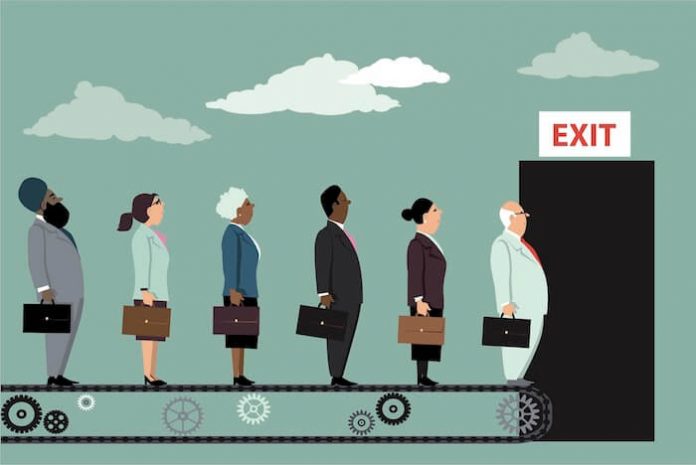
Among the many eye-opening takeaways from the recent Workhuman report, How the Great Resignation Will Shape HR and the Future of Work, there’s one that particularly jumped out at me.
In a survey of more than 3,500 workers in the U.S., UK, Ireland, and Canada, nearly 4 in 10 (38 percent) said they plan to look for a new job in the next 12 months. Compare those figures to the findings of Workhuman’s December 2019 survey when just 21 percent—almost half as many workers—were looking for a new job. And as recently as September 2021, quit rates continued to increase in 15 states, according to the latest data from the U.S Bureau of Labor Statistics.
What’s happening here? In my opinion, a couple of factors are driving this dramatic transformation in how employees view and approach their work life.
- Redefining the very concept of work.
I believe the very concept of work has fundamentally changed for many of us—including myself. While, unfortunately, many essential workers—including those in healthcare —didn’t have the option to work hybrid or remotely, the pandemic marked the first time many people found themselves working from home for an extended period of time. And guess what? We found a lot of things we liked about this new work model. No commute. More time with family. Greater freedom and flexibility. These are things we’ve become accustomed to—and things we want to keep in our lives. And it dovetails with the findings from the Workhuman report, which found that, of the workers looking for a new job, 30 percent cited “more flexibility” as the primary reason for doing so. That number jumped to 39 percent for Black employees on the job hunt.
Second, the challenges over the last 20 months have revealed the true character of an organization’s culture and its leadership. Some leaders and their organizations rose to the challenge—and some fell short. Now that the world of work has started to loosen up, employees—especially those who have become disillusioned—are more comfortable exploring their options and making the move to new opportunities. They are ready to look for a work environment that offers better culture, greater flexibility, and more visionary leadership.
In short, people are challenging assumptions about what work is and what it means in our lives. Do I need to go into an office every day? Do I need to confine my work hours to 9 to 5? Can I be just as productive—if not more so—working remotely? The pandemic answered many of those questions, showing us that forward-thinking organizations can not only survive but thrive in the new world of work.
- The challenges for working parents—and how employers can help.
Not surprisingly, working parents faced immense challenges during the pandemic—including the need to coordinate childcare and homeschooling while trying to do their jobs.
According to our survey, 64 percent of respondents experienced burnout; 41 percent said it happened in just the past few months. Of all respondents looking for a new job, 65 percent are working parents seeking ways to better manage family and work responsibilities. What was particularly interesting—and something that challenged my own personal assumptions—was the survey finding that stress levels between mothers and fathers were the same. We need to dispel the notion that working fathers don’t require just as much support in this new working dynamic.
So what should employers do to provide the kind of help and support working parents need during these unprecedented times?
I believe it starts with a simple truth: The line between personal and professional life has been dramatically and irrevocably blurred as a result of the pandemic. In fact, the notion that the two should be separate is nothing short of antiquated, naïve, and unrealistic. Employers today must show empathy for the challenges parents face. I believe the more organizations give to their humans, the more those workers will reciprocate. And when they do that, employee effort and engagement increases dramatically.
- The unique challenges for Black employees.
The report also found that Black employees are more likely to want greater flexibility and a different manager.
As a Black woman, I identify with the unique challenges people of color face in the workplace. Take the matter of hair. Will our kinks, cornrows, or dreadlocks be accepted in our place of work? Should we straighten our hair? Faced with these kinds of questions, it can be easier for us to work from home with the camera off—unless we work for an organization where we truly feel accepted for who we are.
- Community: The antidote to the Great Resignation.
It’s a simple truth: Because people spend a good portion of their lives working, organizations are part of the fabric of society. For that reason, I believe the findings we’ve seen in our Workhuman report demonstrate that organizations have—by and large—failed the people who work for them. They have failed to offer a sense of community and connection. They have failed to deliver a culture where differences are celebrated and embraced. And they have failed to understand that the line between work and personal lives has been irrevocably merged.
What can organizations do to stem the tide of mass exodus? I believe it begins with bringing the human connection back to the workplace. We need to celebrate the things that unite us as humans—families, pets, home. We need to take down the wall between the personal and professional.
Today, organizations need to go beyond recognizing just work accomplishments, and celebrate the total person—birthdays, new homes, completing a marathon—and bring people together from across the organization. In doing so, companies are creating a true community—a community their employees are less likely to leave.
As CEO Eric Mosley so poignantly observed during last fall’s Workhuman Spotlight: “Work may not be a place anymore, but what it is and will continue to be is a source of fulfilling relationships; an important part of our identities as individuals; and a community we can feel a part of.”




